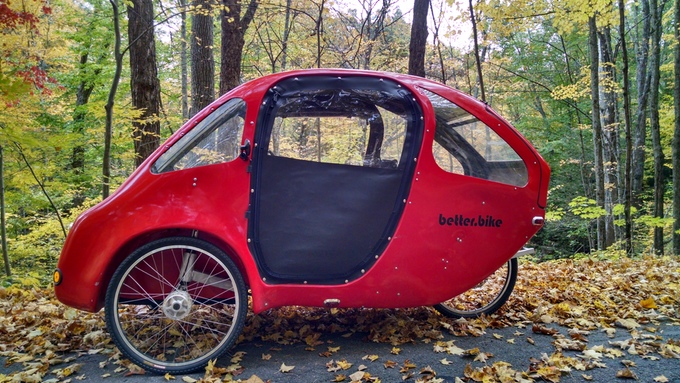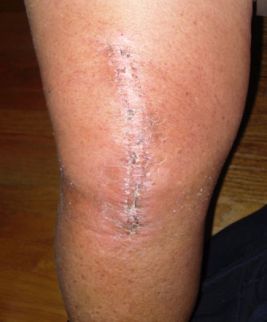
They just keep popping up … velocars, that is. The PEBL is a product of New England here in the U.S. It is an enclosed shell electric pedal assist vehicle. And as you can see it looks very similar to the ELF velocar. The starting price according to their website is $5950.
They met their kickstarter goal which is a good thing. They expect to be shipping by January 2017. They have a blog which you might enjoy reading.
“The PEBL is a new and exciting type of zero emissions vehicle that combines the comfort and utility of a small car with the benefits of a bike. Designed for four season use, the PEBL is a three wheeled, fully enclosed bike that utilizes a combination of pedal and electric drive with a body made from plants. You can pedal as much or as little as you want all year round. It is the world’s most comfortable and functional velomobile, bridging the gap between a car and a bike.”
Base specs:
6061 corrosion resistant aluminum frame with rear suspension
Hemp & soy composite body
Vinyl doors with zip up windows
Full flooring with removable heel well inserts
Impact resistant polycarbonate windows
Programable 48v 750W power system
16ah Lithium Ion battery
Fully adjustable cockpit (pedals, seat, handlebars)
20mph top speed
25 mile range (without pedaling)
5 Amp integrated charger (plugs into any standard wall outlet)
Full street lighting (headlights, brake lights, turn signals, running lights)
Reverse
Cruise control
Regenerative braking
Horn
USB charging port
Keyed power switch
Sturmey Archer 8 speed rear hub
Sturmey Archer 90mm drum break front hubs
Avid BB7 rear 200mm disk brake
Oversized 2.3″ Kenda K-Rad tires on Alex DM 24 alloy rims and heavy duty spokes
6 cubic feet of rear storage
Transformable passenger seat for 4 cubic feet more rear storage
6 Standard Colors: red, orange, yellow, blue, green, white
Dimensions:
Length: 99″
Height: 54″
Width: 44″
Track width: 42″
Weight: 195 lbs
Options:
600 watt heater
Battery warmer wtih dashboard mounted temp sensor
Additional USB/12 volt power ports
110W roof top solar panel
Up to 3 more additional 16ah batteries for 100+ mile range per charge
Interior lighting
Wider tire and wheel options
Custom coloring
I am sure that is a niche for such vehicles. As many of them as there are being manufactured or trying to get to market it will be interesting to see which ones survive. One thing I have notice about all of these which is a real turn off for me is the fact that the “windows” get all messed up and visibility out thru them gets really bad. I like good visibility when I ride so this would be a serious problem for me.


A FREE GIFT awaits you!









